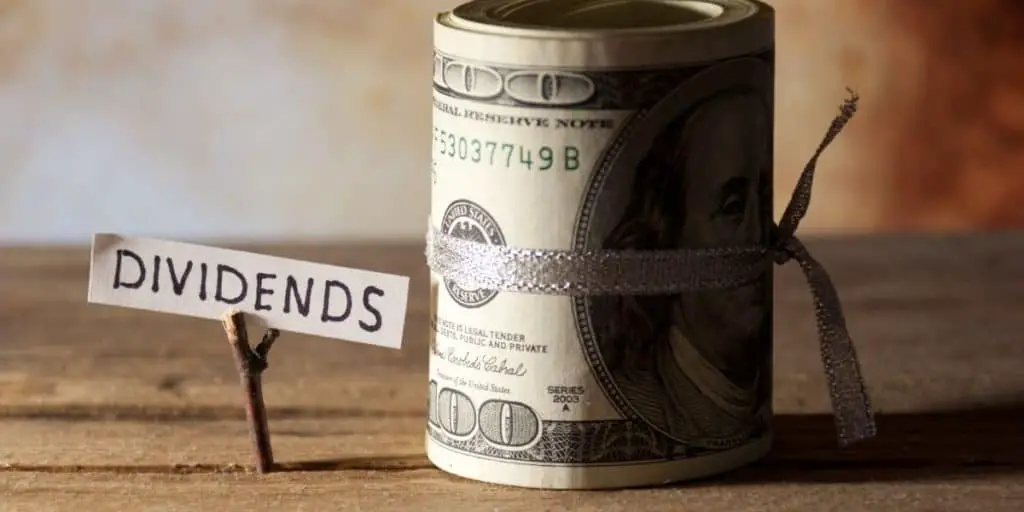Forex trading is a profitable alternative to stock trading. It can have many advantages over the stock market due to its high liquidity and ease of entry. But does forex pay dividends like the stock market?
Forex doesn’t pay dividends as the stock market does. However, carry trade is a similar concept that can help forex traders make more profits. It’s the difference in interest rates of short and long positions, and traders can benefit from this difference by choosing currencies wisely.
In this article, we’ll elaborate on the carry trade and how it can benefit forex traders. We’ll also explain how dividend works and how it compares to carry trade.
IMPORTANT SIDENOTE: I surveyed 1500+ traders to understand how social trading impacted their trading outcomes. The results shocked my belief system! Read my latest article: ‘Exploring Social Trading: Community, Profit, and Collaboration’ for my in-depth findings through the data collected from this survey!
Table of Contents
What Are Dividends?
The dividend is a concept traditionally applied in the stock market. It’s a reward that some companies give their shareholders for investing in their companies. More specifically, dividends are the company’s earnings paid to shareholders other than what they make due to their shares’ value increase.

The company’s board of directors determines which shareholders receive dividends and how much each shareholder can get. A shareholder is eligible for getting dividends if they keep the company’s stock until the ex-dividend date. After that time, the dividend’s eligibility expires.
Dividend-paying companies decide to pay the dividends in cash or as additional company stock. The time frame can be monthly, quarterly, or annually.
Generally speaking, publicly-listed companies pay dividends, but it’s not uncommon to see exchange-traded funds and mutual funds distribute their earnings among shareholders. Startups and high-growth companies may not be able to pay dividends regularly since they may experience losses and costs more often than established firms.
Forex is different from the stock market in terms of trading instruments. Unlike the stock market, forex doesn’t involve buying or selling a specific company’s shares. Instead, users trade currency pairs that don’t belong to any particular entity. That’s why dividends don’t naturally exist in forex.
However, a concept in forex is technically similar to dividends in the stock market. Forex traders benefit from changing interest rates and creating opportunities for a strategy known as the carry trade.
What Is the Carry Trade?
Simply put, carry trade is the daily interest a trader earns or pays for holding a long-term investment in a currency pair, but the idea isn’t that simple.
A popular concept in forex, carry trade is what you get when you sell a currency with a low interest rate and buy another currency with a higher interest rate.
Forex brokers close all positions at the end of each trading day and reopen them the next day. They “carry” the trade to the next day, incurring interest rates and crediting or debiting the account with the currencies’ interest rate variations.
Each country’s central bank determines the interest rates on its currency. So, every evening, each forex account receives an overnight interest rate based on its held currencies. Traders pay interest rates on short trades and earn interest rates on long ones.
To get the idea more clearly, consider this scenario: Suppose you borrow $3000 from a bank with a 2% lending fee. If you use that money to buy an asset with a 6% profit, your overall profit will be 4%. That’s how the carry trade works. You borrow or sell a currency with a low interest rate to buy one with higher rates.
Some currencies like AUD and NZD are high-yielding, while currencies like EUR and USD are low-yielding. So, you should buy low-yielding currencies and sell those with high interest rates to earn a profit through a carry trade.
Plus, the longer you hold a trade, the more profit you can make in the form of a carry trade. So, if you get a $0.5 daily interest on your position and keep it for a year, you can multiply it by 365.
Positive and Negative Carry Trade Explained
A positive carry trade occurs when you purchase a currency with a high interest rate and sell one with a lower interest rate. In this case, the differential between the two currencies’ interest rates is positive. For example, if you buy AUD with a 5% interest rate by selling USD with a 2% interest rate, you’ll get a 3% positive carry.
The negative carry trade is the opposite of the positive carry trade, where the trader incurs a loss and has to pay interest to the broker. Negative carry can be profitable only when you’re sure your position will go up in value and will cover the negative rate.
Sometimes, brokers charge additional costs that may offset a positive interest rate. So, before investing in the interest rate differences, consider those costs, too.
The Role of Leverage in Carry Trade
If a trader uses leverage in the trade, they become more likely to make a profit through a carry trade. So, they can make a significant investment with a small deposit.
Suppose you open a trade worth $10,000. If you use a 1:10 leverage, you won’t need to pay $10,000. Instead, you pay $1000, and the broker pays the rest. Now, if your investment has a positive carry, you receive the daily interest rate for the $10,000, not the actual money you paid.
However, you run the risk of paying the daily interest rate on the $10,000 if your currency pair has a negative carry. So, use leverage wisely and consider all the risks.
Carry Trade Risks
The carry trade strategy isn’t without risks and disadvantages. One of them is that central banks change interest rates on their currencies when their monetary policies change.
For example, they decrease interest rates to attract investors and help their struggling economies. When their economies start to pick up, they increase the interest rate. These changes can affect the carry trade in all investments involving that currency.
Market appreciation or depreciation can also put you at potential risks. Thus, the best scenario is when you have a positive carry trade, and your market goes up in value. However, if you exit the market at a lower price than you bought, you’ll experience a loss that may offset the daily interest payments, leading to your net loss.
So, you need a risk-management strategy such as a stop-loss order to avoid these losses. This way, you ensure that negative market movements can’t affect your account. Plus, you may want to regularly track the central bank’s actions and policies to predict their future decisions.
Dividends vs. Carry Trade: Which One Is Better?
Although dividends are not an option in forex, some traders believe that carry trade has some advantages over dividends:
- Stock traders receive dividends only from certain companies, while forex traders can gain a positive carry trade from any currency pair.
- Most companies pay dividends quarterly or yearly, but interest rates are daily.
- Forex leverage can multiply your profits chances through carry trades. Plus, you don’t need to pay physical money to increase your gains.
- Forex traders have more control over carry trades by choosing currency pairs, but stock traders only get the dividends that a company’s board of directors decide to pay.

Author’s Recommendations: Top Trading and Investment Resources To Consider
Before concluding this article, I wanted to share few trading and investment resources that I have vetted, with the help of 50+ consistently profitable traders, for you. I am confident that you will greatly benefit in your trading journey by considering one or more of these resources.
- Roadmap to Becoming a Consistently Profitable Trader: I surveyed 5000+ traders (and interviewed 50+ profitable traders) to create the best possible step by step trading guide for you. Read my article: ‘7 Proven Steps To Profitable Trading’ to learn about my findings from surveying 5000+ traders, and to learn how these learnings can be leveraged to your advantage.
- Best Broker For Trading Success: I reviewed 15+ brokers and discussed my findings with 50+ consistently profitable traders. Post all that assessment, the best all round broker that our collective minds picked was M1 Finance. If you are looking to open a brokerage account, choose M1 Finance. You just cannot go wrong with it! Click Here To Sign Up for M1 Finance Today!
- Best Trading Courses You Can Take For Free (or at extremely low cost): I reviewed 30+ trading courses to recommend you the best resource, and found Trading Strategies in Emerging Markets Specialization on Coursera to beat every other course on the market. Plus, if you complete this course within 7 days, it will cost you nothing and will be absolutely free! Click Here To Sign Up Today! (If you don’t find this course valuable, you can cancel anytime within the 7 days trial period and pay nothing.)
- Best Passive Investment Platform For Exponential (Potentially) Returns: By enabling passive investments into a Bitcoin ETF, Acorns gives you the best opportunity to make exponential returns on your passive investments. Plus, Acorns is currently offering a $15 bonus for simply singing up to their platform – so that is one opportunity you don’t want to miss! (assuming you are interested in this platform). Click Here To Get $15 Bonus By Signing Up For Acorns Today! (It will take you less than 5 mins to sign up, and it is totally worth it.)
Conclusion
While forex doesn’t pay dividends in the traditional sense, it does pay carry trades, and since you’re dealing with currencies in forex, these carry trades are subject to central banks’ interest rates. So, you can take advantage of their differences.
As brokers pay you interest rates for holding overnight positions, make sure to take long-term positions to increase your interest rate. Buy high-interest-rate currencies and sell them with low interest rates, and never go overboard with leverage as it can incur huge losses and lead to your failure.
BEFORE YOU GO: Don’t forget to check out my latest article – ‘Exploring Social Trading: Community, Profit, and Collaboration’. I surveyed 1500+ traders to identify the impact social trading can have on your trading performance, and shared all my findings in this article. No matter where you are in your trading journey today, I am confident that you will find this article helpful!
Affiliate Disclosure: We participate in several affiliate programs and may be compensated if you make a purchase using our referral link, at no additional cost to you. You can, however, trust the integrity of our recommendation. Affiliate programs exist even for products that we are not recommending. We only choose to recommend you the products that we actually believe in.
Recent Posts
Exploring Social Trading: Community, Profit, and Collaboration
Have you ever wondered about the potential of social trading? Well, that curiosity led me on a fascinating journey of surveying over 1500 traders. The aim? To understand if being part of a trading...
Ah, wine investment! A tantalizing topic that piques the curiosity of many. A complex, yet alluring world where passions and profits intertwine. But, is it a good idea? In this article, we'll uncork...
